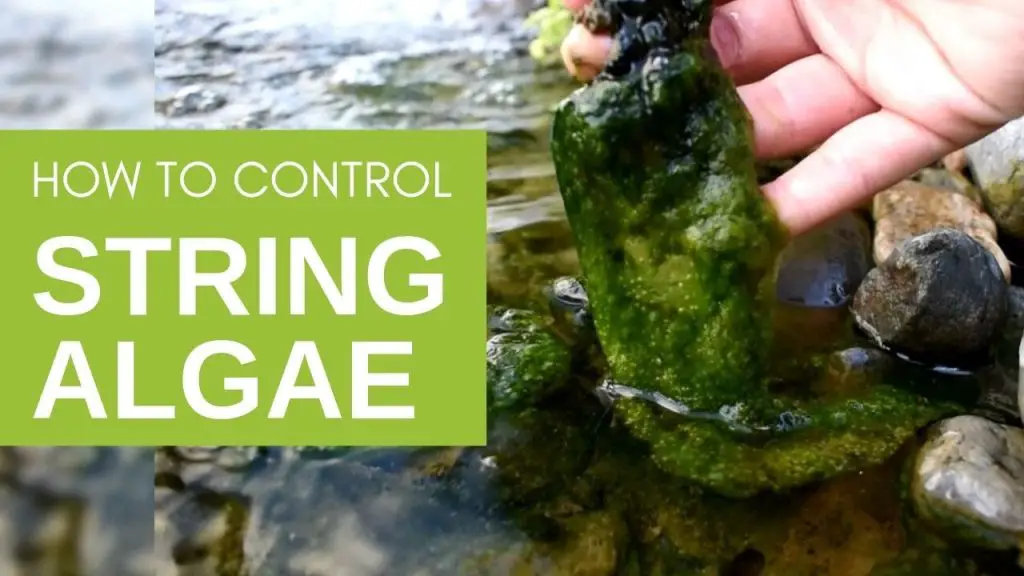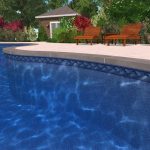String algae, also known as blanket weed, can quickly take over a koi pond, causing water quality issues and negatively impacting the health of your fish. Dealing with string algae can be a frustrating task for pond owners, but with the right strategies and maintenance practices, you can effectively control and eliminate this nuisance algae from your pond.
1. Manual Removal
One of the most straightforward methods to control string algae in your koi pond is through manual removal. Using a pond net or a brush, gently remove the algae from the water surface and plants. Regularly check and clean your pond to prevent the algae from spreading and taking over.

Credit: cencalkoi.com
2. Use of Barley Straw
Barley straw is a natural and effective way to combat string algae in ponds. When barley straw breaks down in water, it releases compounds that inhibit algae growth. You can place barley straw bales in your pond or use barley straw extract to help control algae blooms.

Credit: m.youtube.com
3. Optimize Filtration
Ensuring proper filtration in your koi pond is essential for controlling string algae. Invest in a high-quality filtration system that can effectively remove excess nutrients from the water, which algae thrive on. Regularly clean and maintain your filters to prevent clogging and promote optimal filtration efficiency.
4. Introduce Aquatic Plants
Adding aquatic plants to your koi pond can help outcompete string algae for nutrients and space, reducing its growth. Plants like water lilies, water hyacinth, and hornwort can also provide shade and oxygenation, further improving water quality and creating a healthier ecosystem for your koi.
5. Balance Nutrient Levels
String algae thrives in nutrient-rich environments, so it’s crucial to maintain balanced nutrient levels in your pond. Avoid overfeeding your koi and regularly test the water for ammonia, nitrites, and phosphates. Implementing a proper feeding schedule and using low-phosphate fish food can help prevent algae outbreaks.
6. UV Sterilization
Installing a UV sterilizer in your pond can help control string algae by exposing the water to ultraviolet light, which kills algae cells and prevents them from reproducing. UV sterilization is a safe and effective method for maintaining water clarity and reducing algae growth in your koi pond.
7. Beneficial Bacteria
Beneficial bacteria products contain strains of bacteria that break down organic matter and reduce nutrient levels in the water, inhibiting algae growth. Adding beneficial bacteria to your pond regularly can help establish a healthy microbial balance and improve water quality.
8. Chemical Treatments
As a last resort, you can consider using algaecides or other chemical treatments to combat severe string algae infestations. However, be cautious when using chemicals in your pond, as they can harm your fish and disrupt the pond’s ecosystem. Always follow the manufacturer’s instructions and dosage recommendations carefully.
9. Preventive Measures
Preventing string algae outbreaks is key to maintaining a healthy and balanced pond ecosystem. Regularly monitor water quality parameters, maintain proper filtration and aeration, and practice good pond hygiene to minimize the risk of algae growth. Being proactive in your pond maintenance can help prevent string algae issues in the long run.
Conclusion
String algae can be a persistent problem in koi ponds, but with a combination of manual removal, natural remedies, proper filtration, and preventive measures, you can effectively control and eliminate this nuisance algae. By following the tips outlined in this article and staying proactive in your pond maintenance, you can enjoy a clear and healthy pond environment for your beloved koi fish.





